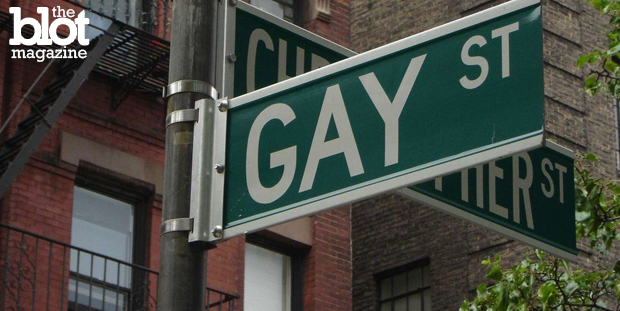I recently befriended an older gay man at my gym. He frequently uses the treadmill next to mine during my mid-morning workout.
Ned’s a retired university professor who’s lived in Washington, D.C., for most of his life. He’s seen the city at its worst. And at its best. Like the night of June 26, 2015. That morning, the Supreme Court handed down the landmark gay marriage decision, and the city was instantly ablaze with excitement and celebration.
That night, Ned and his partner walked down to Dupont Circle, that famous traffic hub that lent its name to the surrounding neighborhood, and specifically, one of America’s most recognizable gayborhoods.
Ned wasn’t too far off in his thinking. The Circle had been the setting for AIDS protests, pride celebrations and thousands of other meet-ups and casual encounters for the capital’s gay and lesbian population. When Ned arrived that night, expecting to find and informal gathering of jubilant gays, he found it empty.
The truth is, like many of the gayborhoods in America, Dupont Circle is becoming less and less queer with each passing year. Starting with the great gay migration brought on by the World War II, gays filtered into cities like Washington for plentiful wartime civil service jobs and a larger sense of service. Following that, during the ’70s and ’80s when urban centers began to decay at astonishing speeds, gay men, not caring that schools were substandard or streets unsafe, stayed on. Neighborhoods were built around men knowing that they had at least one thing in common with the other men who lived around them. Liked the Castro in San Francisco or Greenwich Village in New York City, gay men were living, working and socializing in the same few square blocks, giving the neighborhood a 24-hour queer presence.
But all this seems to be fading away.
A new study written by University of British Columbia sociologist Amin Ghaziani and published by Princeton University Press attempts to explain this new trend. In “There Goes the Gayborhood,” Ghaziani found that the number of gay men living in traditionally queer areas has dropped 8 percent, while the number of lesbians (the crack troops of the movement) has dropped 13 percent.
The reason? Recent strides in mainstream acceptance, as seen in such things as in June’s marriage equality decision, has opened up other sections of the city as gay men start to move out from under the safety blanket that a familiar safe space can provide.
Gayborhoods may indeed be fading, and this could be the natural progression of things. The real test could come down the road as gay men and lesbians pack up with them the spirit and self-awareness that came along with living in the gayborhood. As Ghaziani asks, can integration coexist alongside the celebration of differences? And will the city and its citizens come the miss the quirkiness and vibrancy that their gayborhoods once proudly displayed?
Maybe it will spread. Ned found Dupont Circle empty. Most people were at the White House, which was itself decked out in rainbow lighting.
Prices are paid for progress, and in the long march toward acceptance, things are lost along the way. Gays and lesbians are folding into the mainstream. And with it, we lose some of the grittiness and glittering that made us such a colorful and distinctive community.
I suppose it’s progress.
Of sorts.
Brock Thompson is a contributing journalist for TheBlot Magazine.





